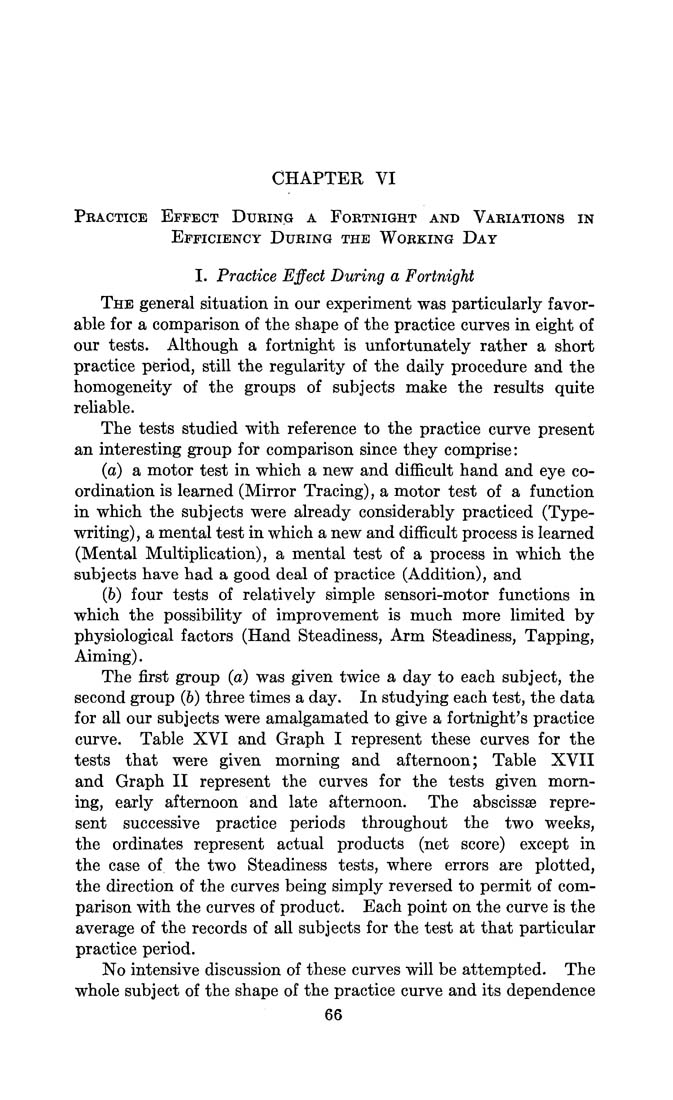CHAPTER VI
Practice Effect During a Fortnight and Variations in
Efficiency During the Working Day
I. Practice Effect During a Fortnight
The general situation in our experiment was particularly favor¬
able for a comparison of the shape of the practice curves in eight of
our tests. Although a fortnight is unfortunately rather a short
practice period, still the regularity of the daily procedure and the
homogeneity of the groups of subjects make the results quite
reliable.
The tests studied with reference to the practice curve present
an interesting group for comparison since they comprise:
(a) a motor test in which a new and difficult hand and eye co¬
ordination is learned (Mirror Tracing), a motor test of a function
in which the subjects were already considerably practiced (Type¬
writing), a mental test in which a new and difficult process is learned
(Mental Multiplication), a mental test of a process in which the
subjects have had a good deal of practice (Addition), and
(6) four tests of relatively simple sensori-motor functions in
which the possibility of improvement is much more limited by
physiological factors (Hand Steadiness, Arm Steadiness, Tapping,
Aiming).
The first group (a) was given twice a day to each subject, the
second group (b) three times a day. In studying each test, the data
for all our subjects were amalgamated to give a fortnight's practice
curve. Table XVI and Graph I represent these curves for the
tests that were given morning and afternoon; Table XVII
and Graph II represent the curves for the tests given morn¬
ing, early afternoon and late afternoon. The abscissae repre¬
sent successive practice periods throughout the two weeks,
the ordinates represent actual products (net score) except in
the case of the two Steadiness tests, where errors are plotted,
the direction of the curves being simply reversed to permit of com¬
parison with the curves of product. Each point on the curve is the
average of the records of all subjects for the test at that particular
practice period.
No intensive discussion of these curves will be attempted. The
whole subject of the shape of the practice curve and its dependence
66
|








